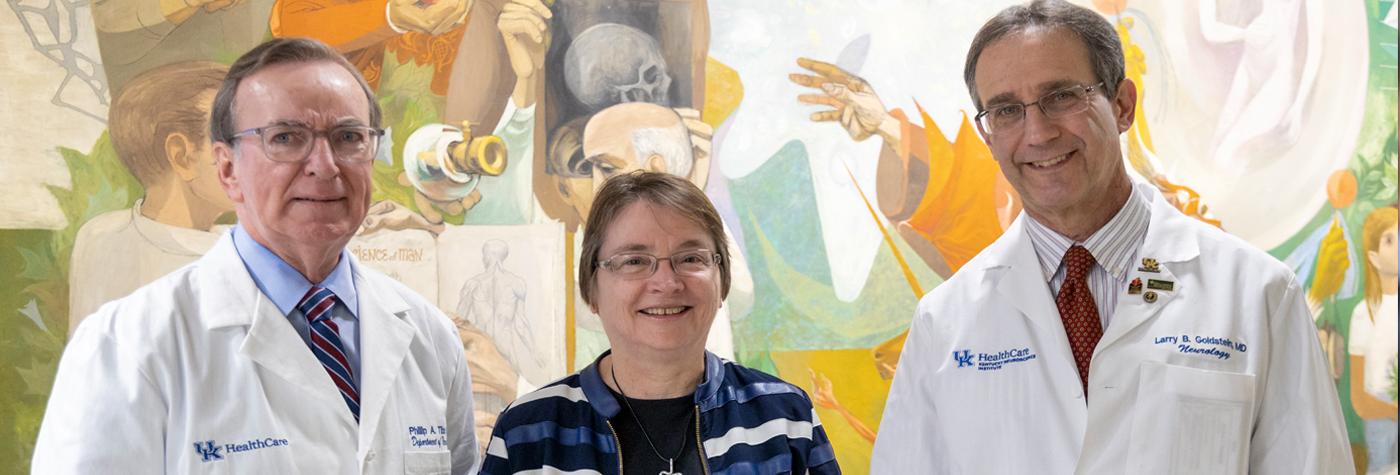This Is What Collaboration Looks Like
"Collaboration" is a buzzword often used and seldom understood. It's almost ubiquitous in publications like these, and we certainly see it in small ways every day: letting someone merge in front of you on the highway. Two young students working through a math problem together. Mommy play dates.
The Kentucky Neuroscience Institute wouldn't be successful without collaboration at the highest levels of clinical and bench neuroscience. Last year, we took a major step to improving collaboration across the University of Kentucky to improve the connection between bench science and clinical care.
Initiatives
UK named the neurosciences as a Research Priority Area. Aimed at fostering collaborations and including more than 270 faculty from nine colleges and more than 34 departments, our first initiatives included:
- Forming an Internal Advisory Council.
- Establishing a neurosciences biobank (the NeuroBank).
- Recruiting a statistician to collaborate and consult with other faculty.
- Supporting faculty “mini-fellowships.”
- Developing intra-net and extra-net websites.
- Recruiting a project coordinator.
Clinical studies
Our clinicians and scientists also are currently conducting more than 60 studies for patients with a variety of common and rare neurological conditions.
Treatment centers
Our treatment centers – consisting of our award-winning Joint Commission Comprehensive Stroke Center, National Association of Epilepsy Centers Level IV Epilepsy Center, ALS Treatment Center of Excellence, Memory Disorders Clinic and Brain Restoration Center – provide the best care the nation has to offer and are platforms for research. The Spinal Cord and Brain Injury Research Center is diligently investigating potential treatments that facilitate healing, dignity and independence for people with spinal cord and brain injuries.
At the Kentucky Neuroscience Institute, we continue to expand our capabilities and are excited about the progress we are making in addressing all of our missions. We believe strongly that our work is transforming Kentucky (and beyond) into a healthier place. We know you will agree.

